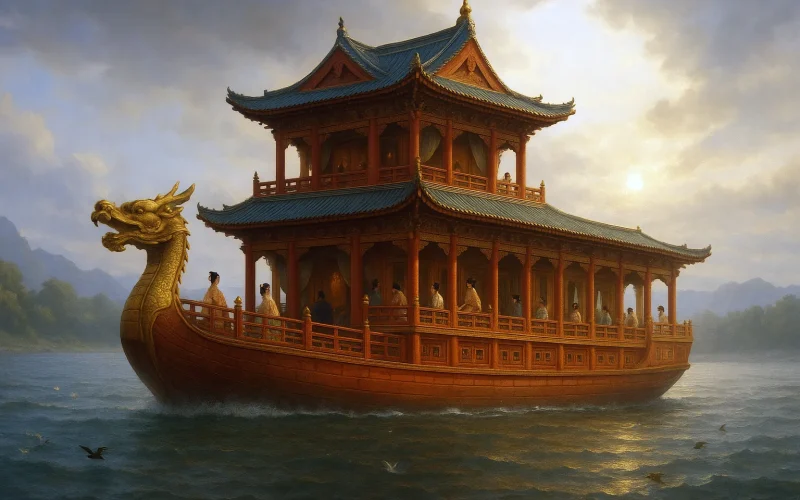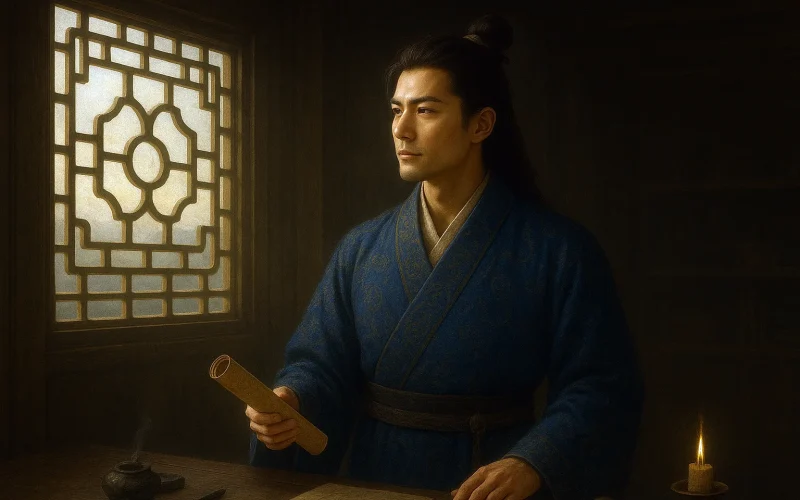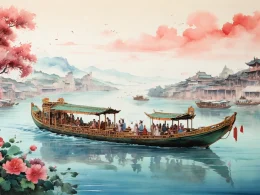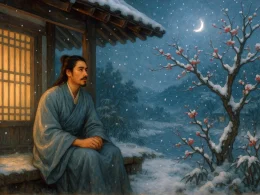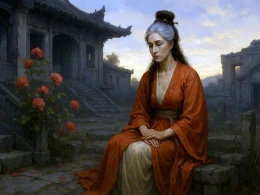A lucky day! We're glad to sail with ease;
We loose the cable and enter Huai's stream.
Our ship with bird's head breasts the currents cold;
The frosty wind blows with a sighing moan.
The hidden fish leap out of waves in flight;
The waterfowl sink 'neath the billows white.
The Northern Canal's not far away now;
We gaze afar, pleased to have cheered the sovereign's heart.
Original Poem
「奉和出颍至淮应令」
虞世南
良晨喜利涉,解缆入淮浔。
寒流泛鹢首,霜吹响哀吟。
潜鳞波里跃,水鸟浪前沉。
邗沟非复远,怅望悦宸襟。
Interpretation
This poem is an occasional work composed for an imperial procession, where courtiers wrote verses in response to the emperor's poem. The Ying River and Huai River were vital waterways for transportation, facilitating grain transport and military movements between north and south. The poet Yu Shinan, accompanying the journey by boat from the Ying River to the Huai River, encountered the cold scenery of the late autumn-winter transition. In response to the imperial command, he recorded his observations and reflections along the way with concise brushstrokes. The poem combines depictions of natural scenery with reflections on the hardships of travel, culminating in gratitude and loyalty to the emperor.**
First Couplet: "良晨喜利涉,解缆入淮浔。"
Liáng chén xǐ lì shè, jiě lǎn rù huái xún.
On a fine morning, I rejoice in the favorable crossing;
Untying the cables, we enter the shores of the Huai River.
"Fine morning" not only depicts the beauty of the hour but also carries auspicious connotations, reflecting the poet's joyful mood. "Favorable crossing" alludes to the Book of Changes, symbolizing a smooth and safe journey. "Untying the cables" vividly captures the moment of departure.
Second Couplet: "寒流泛鹢首,霜吹响哀吟。"
Hán liú fàn yì shǒu, shuāng chuī xiǎng āi yín.
The cold current laps against the prow;
The frosty wind whistles a mournful tune.
This couplet engages both sight and sound to portray the hardships of the journey. "Prow" refers to the boat's front, battered by waves; "frosty wind" emphasizes the seasonal chill; "mournful tune" not only describes the sound of the wind but also implies the solitude and melancholy of travel.
Third Couplet: "潜鳞波里跃,水鸟浪前沉。"
Qián lín bō lǐ yuè, shuǐ niǎo làng qián chén.
Hidden scales leap within the waves;
Waterbirds dive and rise before the surf.
This couplet captures the vitality of nature, with fish and birds adding dynamism to the journey. The leaping fish reveal the energy of aquatic life, while the diving and rising birds highlight the turbulence of the waves. These lively details enrich the otherwise cold and solitary scene.
Fourth Couplet: "邗沟非复远,怅望悦宸襟。"
Hán gōu fēi fù yuǎn, chàng wàng yuè chén jīn.
The Han Canal is no longer distant;
Gazing ahead with mixed feelings, I hope to bring joy to the emperor's heart.
"The Han Canal," an ancient canal connecting to the Huai River, symbolizes the approaching destination. The poet expresses both relief at the journey's end and his devotion to the emperor's contentment, concluding the poem with a subject's loyalty.
Holistic Appreciation
The poem is structured clearly: the first couplet expresses the joy of departure, the second depicts the harsh environment, the third highlights natural vitality, and the fourth concludes with emotional resolution. It blends realistic descriptions of the journey with the political undertones of a courtier's response. The language is concise yet profound, particularly in lines like "the frosty wind whistles a mournful tune," where the wind's sound mirrors the poet's inner melancholy. The ending, "bring joy to the emperor's heart," fulfills the poem's occasional purpose, aligning with the conventions of court poetry.
Artistic Merits
- Integration of Scene and Emotion: Natural imagery intertwines with the poet's feelings, blending description with lyricism.
- Multi-Sensory Engagement: Visual elements like "cold current" and "hidden scales" are complemented by auditory details such as "mournful tune."
- Contrastive Technique: The juxtaposition of harsh currents and lively creatures enhances the artistic tension between desolation and vitality.
- Occasional Conventions: The conclusion emphasizes loyalty, adhering to the political function of response poetry.
Insights
This poem demonstrates how the poet finds vitality in nature amid the hardships of a cold journey. It reminds us that life's path is often fraught with challenges, but by observing the world with a tranquil mind, we can discover resilience and hope even in adversity. The poet's concluding emphasis on loyalty and duty inspires us to uphold integrity and commitment, regardless of circumstances, as the firmest anchor in life.
About the Poet
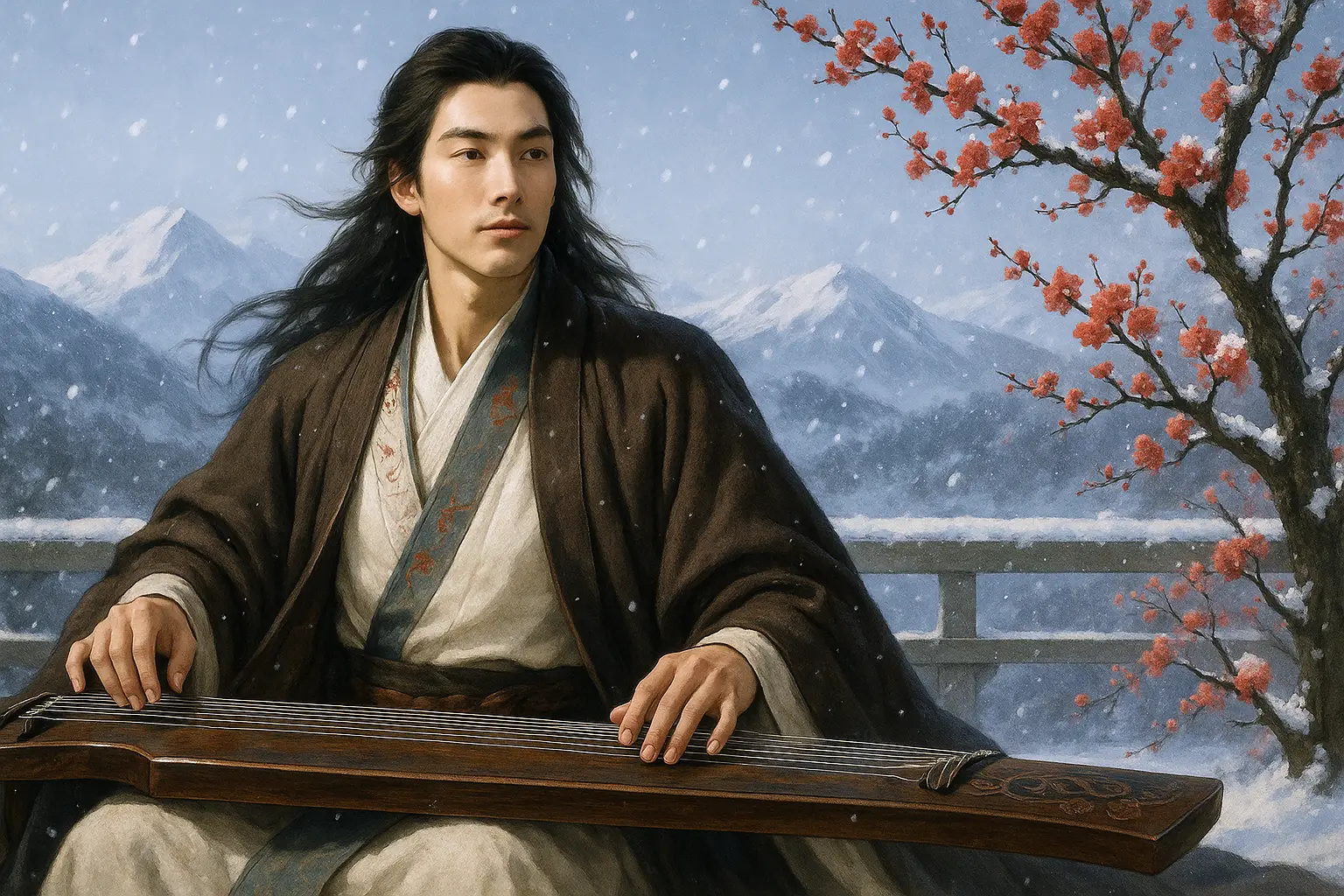
Yu Shinan (虞世南 558 - 638), a native of Yuyao in Zhejiang Province, was a prominent statesman, writer, calligrapher, and politician during the Zhenguan era of the early Tang dynasty. As one of the "Twenty-Four Meritorious Officials of Lingyan Pavilion," he rose to the position of Director of the Imperial Library. His calligraphy earned him a place among the "Four Great Calligraphers of the Early Tang," alongside Ouyang Xun, Chu Suiliang, and Xue Ji. In poetry, he inherited the tradition of Xu Ling and pioneered a refined, balanced, and harmonious courtly style. He also compiled the North Hall Book Excerpts, establishing a new genre of encyclopedic literature.






